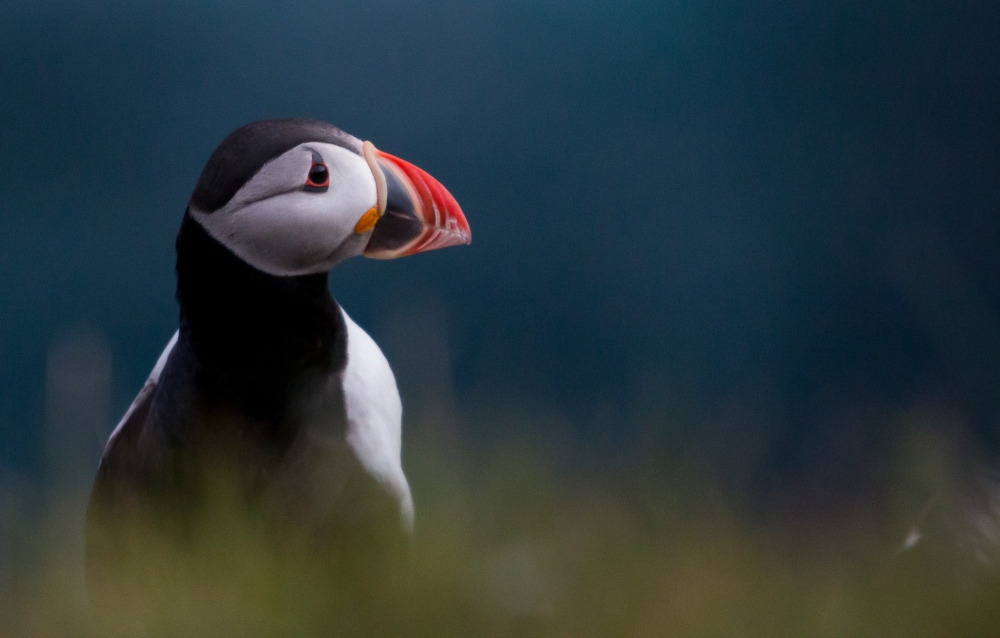Puffins are one of the most iconic birds around the world! You find Puffin statues in airports to morning cereals called Puffins (yes, it’s an actual thing and no Puffins are harmed in the making of the cereal 😉) Few realise that this iconic bird is declining very fast and if nothing is done we might lose another creature for good.
UK has many breeding Puffins, with 10% breeding in many seabird colonies around the UK, most up in Scotland. These iconic birds start to arrive at their breeding grounds in late April up to the beginning of May. Once there they start getting used to walking and landing on land again and start preparing by making their burrows comfortable for the upcoming season.
At the peak of the season, Puffins would come and go from the colony to the feeding area, diving, picking and holding sandeels in their beak and take them back to the their pufflings. Before entering the burrow, the Puffin flies in a circle to check for predators before entering the burrow. This is done to protect the location of its puffling. If a predator is spotted, the Puffin will not go into the burrow. This is known as wheeling.
Puffins are loyal to the burrow, so normally Puffins will use the same burrow repeatedly. During the season they only raise one chick and feed it on a diet of Sandeels and other species of fish. (Sandeels are small silvery fish, which spends most of the time under sand. Due to climate change and overfishing, the number of Sandeels is declining.)
One important colony is on the Isle of May, where over 120,000 Puffins call this place home and it is easy to visit the island to see and enjoy these birds.
Unfortunately, Puffins face a very sad situation as several traditional Puffin colonies are now empty or their populations declining fast. Since 1986 Puffin population has been in decline. The main cause of the decline is the lack of their primary prey, i.e. Sandeels. Puffins in Scotland, especially, rely heavily on this species of fish to feed their pufflings. This is not only affecting Puffins, but also effecting other species of seabirds, like the Arctic Tern.
Another threat to Puffins is the introduction of alien species, such as feral cats, rats and minks. Puffins don’t have a natural resistance towards these creatures and they are easy prey to these animals.
It would be sad to see this iconic bird disappear from our seabird colonies, so we must all do our bit to support conservation work and help these creatures so that we can give them a brighter future.
